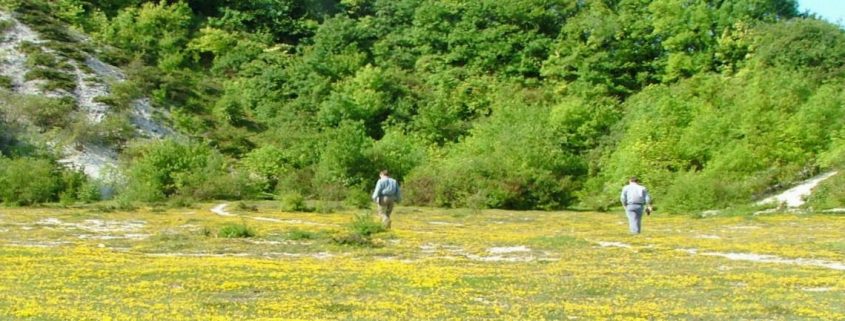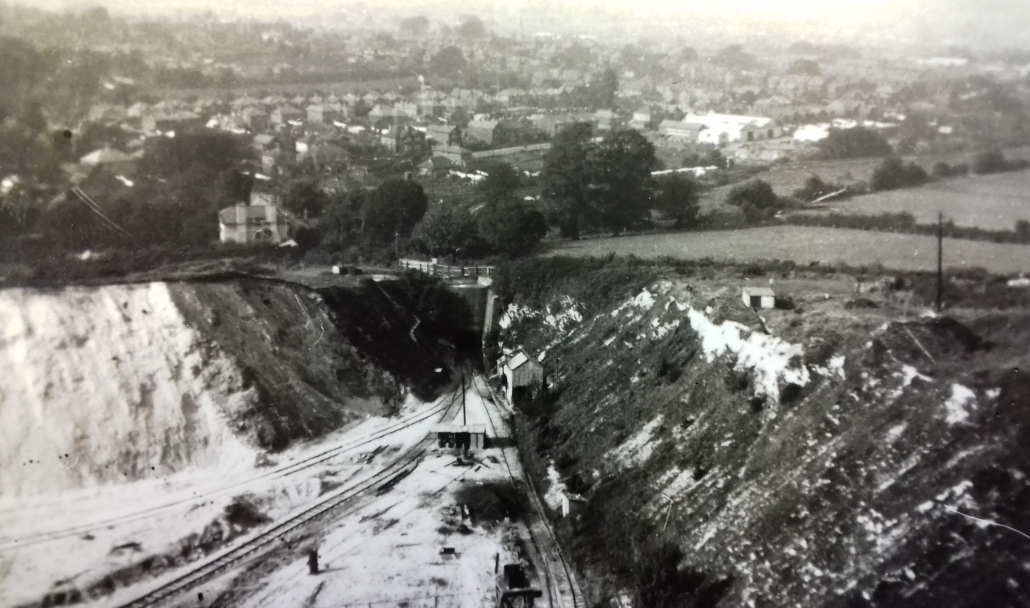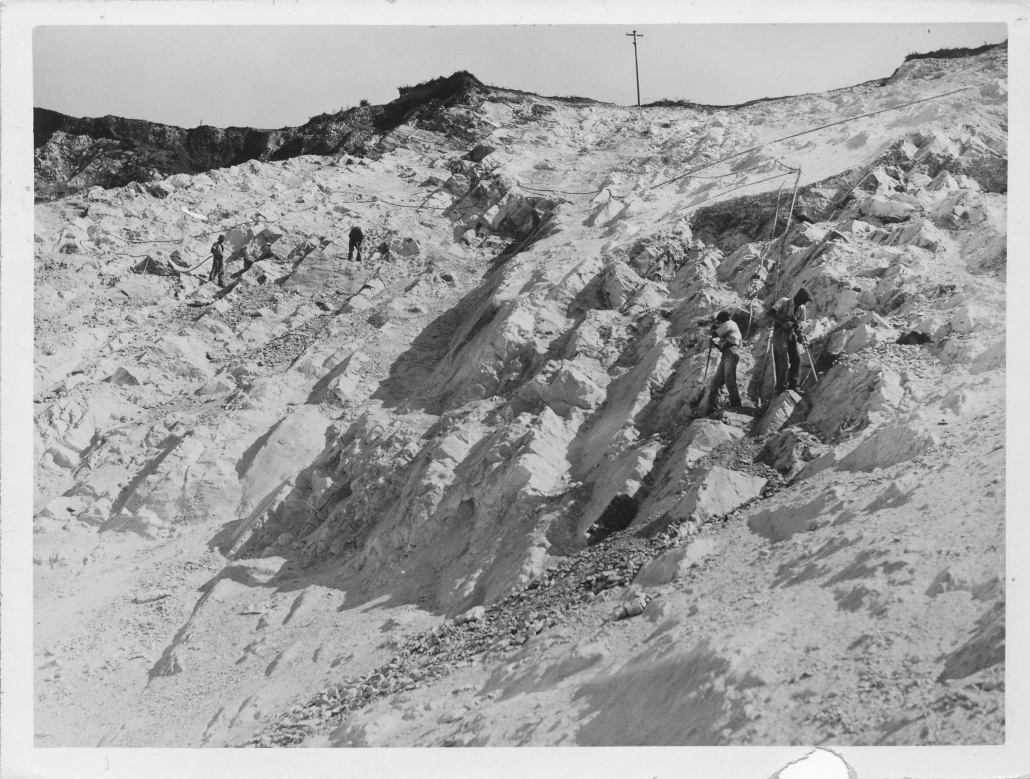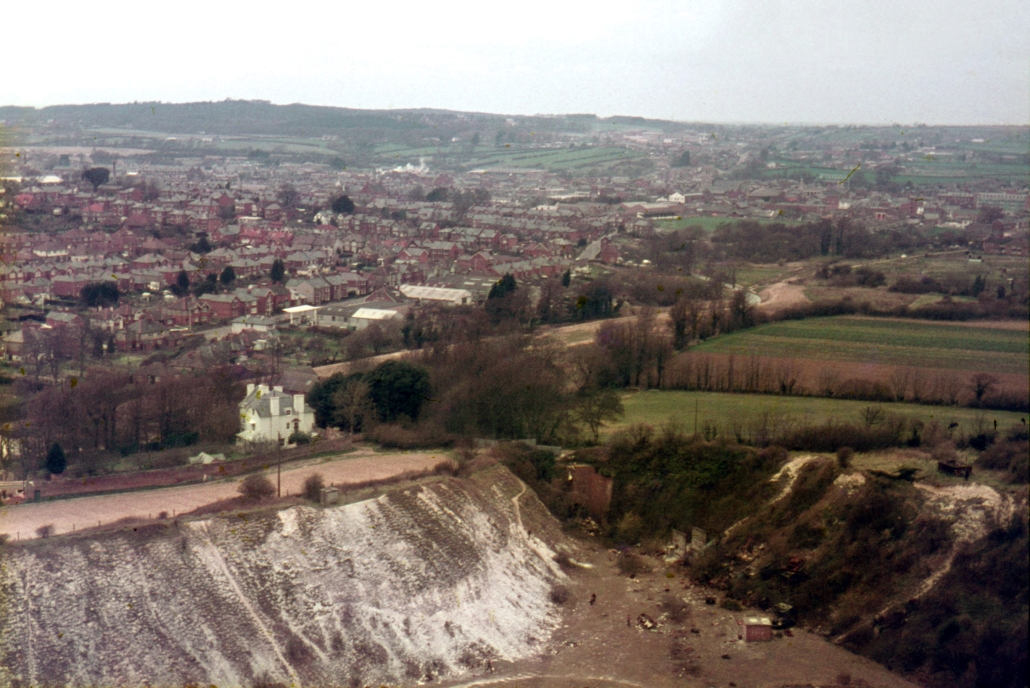
Shide Chalk Pit
Tranquil Shide Chalk Pit is a former industrial site which is now a haven for wildlife on the edge of the Isle for Wight’s county town. The site was quarried for chalk during the first half of 20th Century and the prominent west-facing slope is a major landmark on Newport’s skyline. Since quarrying stopped, vegetation has been colonising the floor and sides of the pit. As a result, habitats vary from bare rock to emergent woodland, and all stages in between.
What to look and listen for …
Shide Chalk Pit is a Site of Special Scientific Interest as it has a chalk grassland flora and a shaded stream, which has a good variety of mosses and liverworts growing by it.
Abandoned chalk pits are often good sites for orchids and Shide is no exception, with populations of bee orrchid, pyramidal orchid and southern marsh orchid. In places, the lichen Cladonia rangiformis has become abundant giving a greyish, crisp character to the turf. Rabbits are a major influence in keeping the turf short and adders and common lizards are known to occur.
There is a good variety of butterflies in the area including brimstone, orange tip, holly blue, dingy skipper, green hairstreak, wall brown, green-veined white, speckled wood, comma, small tortoiseshell, common blue, marbled white and chalk hill blue. Nests of the yellow meadow ant are noticeable throughout the site.
The woodland is dominated by sycamore and ash, with hawthorn. Ivy covers much of the woodland floor. The northern slope, nearest to human habitation, includes exotic shrubs like holm oak and sweet bay whilst the south-west corner contains more native woodland species like wild cherry, field maple and spindle.
Scattered scrub areas around the pit slopes are dominated by privet with butterfly bush and cotoneaster. Sallow grows around the spring and along the main stream the ground flora includes glaucous sedge, hard rush, coltsfoot and a good population of southern marsh orchid. This area has a moist, shady environment, which is ideal for mosses and liverworts.
Many common birds nest within the site including great tit and wood pigeon within the wooded areas, blue tit and chaffinch in the scrub, and jackdaw in holes within the steep eastern cliff face. Other birds which have been seen include little owl, green woodpecker, chiffchaff and blackcap; goldcrest and long-tailed tit feed here during the winter.
Listen for the sound of silence – well not quite, but this site is surprisingly quiet considering its close proximity to the County Town. High pitch whistles may be a flock of long-tailed tits, while the magpies will screech at each other, they live in holes in the chalk cliff. The cooing is the wood pigeons.
… and smell and touch
Oxeye daisies have a honey smell, whilst Yarrow is a bit cabbagy.
Put your hands to the chalk slopes or exposed chalk surface and you we understand why the butterflies like to sunbathe on it.
Feel the shiny leaves of the cotoneaster which grows on the quarry floors and sides. It has berries too, and feel the contrasts of manmade material – brick, concrete and metal.
… and imagine

Its 1934 and you are in the quarry. What is it like? There is excellent archive footage here.
In 1895 the Medina Cement Company leased part of the chalk pit and concluded an agreement with the Isle of Wight Central Railway for the haulage of chalk, using the cement company’s own wagons, to the mills
at Medina at a rate of 5d. a ton, subject to a guaranteed traffic of 30,000 tons a year. A spur was laid at Shide from the railway’s siding, through a deep cutting and a short tunnel into the pit.


You can spot relics of the railway line in our Pan Mill Meadows reserve, and the cement kilns have been rediscovered at Dodnor Creek and Dickson’s Copse Local Nature Reserve. A story of quarrying on St Georges Down can be found here.
Go back even further in time – to the days of Henry VIII. The courts for the hundred of West Medine were held at ‘Westmedine le Pitte’, which has been identified the chalk pit at Shide. Picturethe knights and yeomen of the Hundred of West Medina meeting for their deliberations.
For more on the story of the chalk pit click here.
Nature at home and activities on site
We have produced a super Colouring Sheet for you to download and complete at home. We have also produced an I Spy Sheet and Map for you to print at home, or download to your phone and take to the site. In addition our onsite interpretation board includes a self-guided sensory trail. And become a Bug Bunch Ranger. These are downloadable on site from the Information Pillar at the entrance and can also be accessed here.
Managing the site
We manage Shide Chalk Pit for its rich natural habitat – the succession of bare chalk through to a chalk grassland plant community and tall scrub and trees. However, this habitat requires maintenance to prevent the growth of invasive shrubs and trees. Cotoneaster is of particular concern. We therefore carry out winter work to remove excessive growth.
How to get there
On foot/By bike – The entrance is down a flight of steps off Burnt House Lane. The Red Squirrel Trail (NCN 23) passes close to the site – leave the trail at Shide Road. Bikes can be attached to the railings at the site entrance or taken on site. There are two cycle racks on a post just inside the entrance.
By bus – Shide Road Stop (Routes 2/3) + 5 min walk. (Bus Timetables)
By car – There a small amount of roadside parking near the site, we would recommend arriving by bus, bike or on foot. The approximate code for your SATNAV is PO30 3BB.
what3words for site entrance ///supplied.musician.basically
Access
The site is inaccessible to all wheelchairs and mobility scooters. Prams and pushchairs will need to be lifted down the steep steps. Once in the site, it is free of gates and styles. The surface is grass, which is boggy in areas, particularly in wet periods. Old industrial remains such as rails can create trip hazards. There is no seating within the site.
There is a Information Pillar at the entrance to the site. The site information pillar has a QR code that links to an audible description detailed below. The information pillar also has a QR code that links to a map and activities. There is also a site map on the Information Pillar.
The nearest toilets are under 0.4 mile, and are in store so check opening times – ASDA (what3words ///prune.traded.wizards) . Out of shop hours there are toilets in South Street, Newport (what3words ///ethic.fired.imprinted) . These are slightly further away.
We have written an Access Statement for this site. This includes mobility and sensory issues and opportunities. We welcome feedback from users.

We have produced an audible description creating a mind’s eye view of the area to allow a visually impaired person to enter with confidence. It will describe the entrance, the size of the area, where to find further information or help and any major obstacles or features. Information has been produced by visually impaired people ensuring it is useful and accurate. Access the description by scanning the QR code to the left of this text on your phone or tablet, or by clicking here.
Get Involved
There are various ways you can help improve and maintain our sites. We rely on volunteers to help with many tasks on our sites and also need people who are happy to regular visit the site be our “eyes and ears”, this means we can respond much quicker to issues. Our shop raises money to support our work and needs a team of volunteers. Or maybe you would like to help us with events. Find out more here.
You can also help by becoming one of our regular supporters. Even giving a few pounds each month can make a real difference, with your donation being invested into site management and improvement work to benefit site visitors and look after our precious wildlife. Sign up here.
